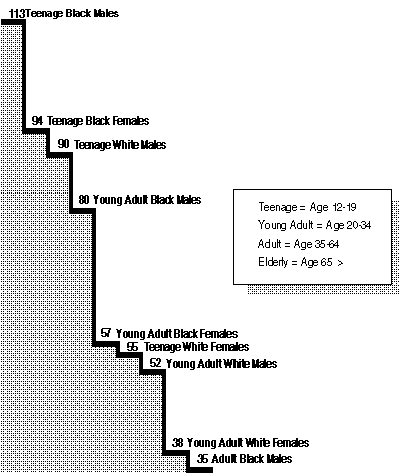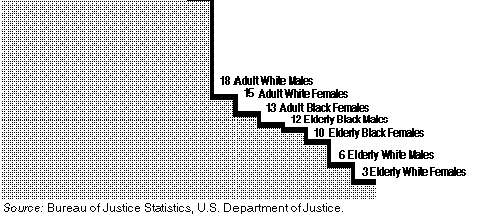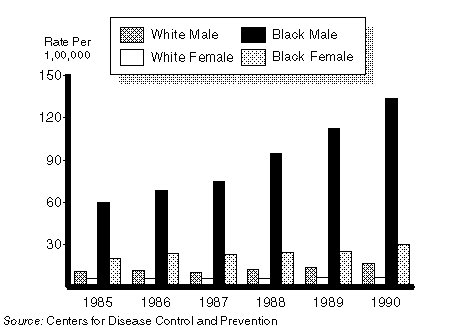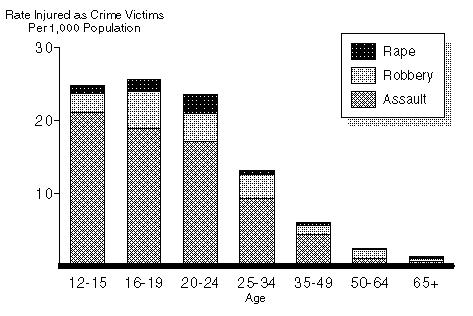May 1995
Please note:
See our January 2007
publication,
California’s Criminal Justice System: A Primer, which provides updated data
related to the juvenile justice system as well as answers to the following
questions: Who Are Juvenile Offenders? How Prevalent Is Juvenile Crime in
California? What Happens to Juvenile Offenders? It also discusses (a) reforming
the division of juvenile justice and (a) defining state and local
responsibilities for juvenile offenders.
Juvenile Crime--Outlook for California
Part IV
Who Is Being Victimized by Crime?
National victimization surveys provide a good deal of reliable data about the victims of crime. What these surveys show is that juveniles are disproportionately the victims of crime as well as the perpetrators of crime. Furthermore, national morbidity and mortality data show that homicide is a leading cause of death for juveniles. The surveys reveal that:
- Groups at the highest risk of becoming victims--teenagers--are not the ones who generally express the greatest fear of crime. In fact, persons under the age of 20 are almost ten times more likely to be victims of crime than persons over the age of 65.
- Teenagers are most often the victims of both violence and personal theft. Teenage black males have the highest victimization rates for violent crime (about 20 percent higher than teenage black females, the next highest group). Teenage white and black males have the highest victimization rates for personal theft.
- Blacks are most often the victims of violence--the violent victimization rate for blacks is 50 percent higher than for whites.
- Juveniles are much more likely to be killed or injured by crime in comparison to other age groups.
Victimizations Nationwide Per 1,000 Population
1993


Nationwide Deaths Caused by Homicide For Youth 1-19 Years Old

- Among black juveniles in 1990, homicide was the single leading cause of death (virtually all were firearm homicides), more than three times the number of deaths attributable to motor vehicle accidents.
- For all juveniles, death by homicide was the second leading cause of death after motor vehicle fatalities, and homicide deaths exceeded death by natural causes.
- Homicide death rates for all juveniles increased 92 percent between 1985 and 1990, and for black male juveniles the rates increased 184 percent over the same period.
Juveniles Are Disproportionately Injured As Victims of Crime
1993

- Many more juveniles have reported, as part of victimization surveys, being injured as a result of a criminal act than adults and the elderly. In fact, juveniles, for every category of violent crime, report more injuries than any other age group.
- Someone age 16 to 19 is 25 times more likely to be injured as a consequence of aggravated assault than someone over 65, and 4 times more likely than someone between the ages of 35 and 49.
- Juveniles, ages 12 to 19, report more injuries for robberies than all those age 25 and older.
Return Juvenile Crime Table of Contents
Visit the 2007 Publication, California’s Criminal Justice
System: A Primer
Return to LAO Home Page